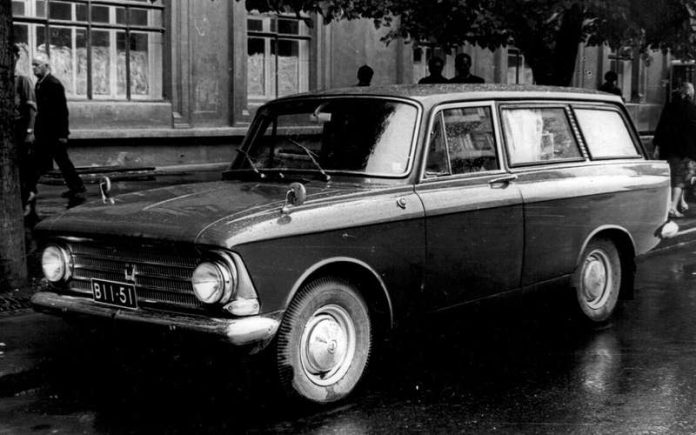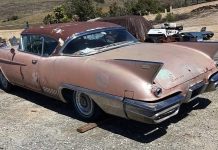The first Moskvich trucks, which appeared on the streets of the capital in the fall of 1947, were nicknamed “Buratino.” They were so called because of their body made of wood and plywood. These vans were created on the basis of the Moskvich-400, the first mass-produced car in the USSR, which could be purchased without special permission. The country was in dire need of light-duty trucks, and other suitable models simply did not exist at the time.
The Moskvich-400-422 van was equipped with a 23-horsepower 1.1-liter engine and a three-speed gearbox. A commercial chassis, the Moskvich-400-422K, was developed for it—essentially half the car with all the important components. Vans with a carrying capacity of 250 kg were already assembled on this chassis.
At first, production was carried out by MZMA, but the plant was overloaded with orders, and assembly was transferred to a repair plant of the Ministry of Internal Affairs. Later, vans were also built by other small plants: a refrigeration plant, food industry enterprises, etc. Among them were high vans – early predecessors of the future “heels”.
By 1956, almost 13.5 thousand first-generation Moskvich trucks were produced. An experimental army pickup truck was also created, but it did not go into production.
Second-generation vans
The first all-metal van appeared on the Moskvich-402 chassis. Despite its readiness, MZMA delayed production for a long time: the main customer was the Ministry of Communications, and the plant proposed limited production to a Moskvich-423 station wagon with the seats and window bars removed.
However, the postal service specifically required a fully-fledged three-door van. Ultimately, in 1958, the Moskvich-430 was launched, designed for a cargo capacity of 250 kg and equipped with a 45-horsepower 1.4-liter engine. A partition with a barred window was installed between the passenger compartment and the cargo compartment, and the rear side doors were initially simply sealed; later, a solid new side panel was created.
Later, Moskvich-432 versions and export modifications with improved trim appeared. It is interesting that it was the vans of this generation that became the first mass-produced passenger cars in the USSR with outside rear-view mirrors — they were installed on ordinary passenger cars mainly for export.
Also, on the basis of the second generation, the Lutsk plant (future LuAZ) produced LuMZ-945 refrigerators.
“Washing machines” — third-generation vans
The Moskvich-433 and 434 vans received the nickname “washing machines” because of the stiffening ribs on the upper part of the sides — they resembled an old washboard. Model 433 (50 hp) went into production in 1966. At first, the rear doors were double-leaf, like the GAZ-22, but later they were replaced with a solid lifting one. In 1969, the upper part of the partition was removed and glass was added to the cargo door.
The rear of the body remained virtually unchanged until 1977, when the last Moskvich-2734 vans based on the 2140 with a 75-horsepower engine were released. The weak 50-horsepower version of the 2733 did not go into production. In total, less than five thousand of these cars were produced in 1976-1977.
Why Moskvich vans disappeared
AZLK stopped producing vans largely due to competition with the Izhevsk plant. Although the IZH-2715 was not officially called “Moskvich”, it used the units and design of the Moskvich-412. The high body with hinged doors quickly earned it the nickname “heel.” The model had a higher center of gravity, but was noticeably roomier and more practical than Moscow vans.
Izhevsk also produced the IZH-27151 pickup truck. Production of these models continued until the early 2000s. In total, about 900 thousand IZH-2715 and 135 thousand IZH-27151 were produced.
In Moscow, in 1992, the Moskvich-2335 pickup appeared, but it was already a front-wheel drive car of a new generation – and a separate, less successful story.









